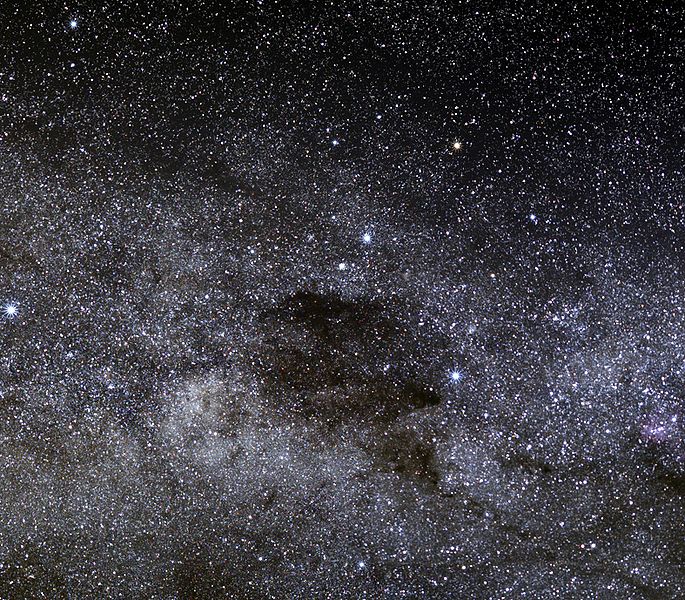Tiedosto:Coalsack-ESO-B06.jpg
Siirry navigaatioon
Siirry hakuun

Tämän esikatselun koko: 685 × 600 kuvapistettä. Muut resoluutiot: 274 × 240 kuvapistettä | 548 × 480 kuvapistettä | 877 × 768 kuvapistettä | 1 170 × 1 024 kuvapistettä | 1 574 × 1 378 kuvapistettä.
Alkuperäinen tiedosto (1 574 × 1 378 kuvapistettä, 1,22 MiB, MIME-tyyppi: image/jpeg)
Tiedoston historia
Päiväystä napsauttamalla näet, millainen tiedosto oli kyseisellä hetkellä.
| Päiväys | Pienoiskuva | Koko | Käyttäjä | Kommentti | |
|---|---|---|---|---|---|
| nykyinen | 21. marraskuuta 2009 kello 19.58 |  | 1 574 × 1 378 (1,22 MiB) | Fabian RRRR | {{Information |Description={{en|1=The Coalsack is one of the most prominent dark nebulae visible to the unaided eye. A beautiful sight in the southern sky, the Coalsack casts a dark silhouette against the Milky Way’s bright stripe of stars. The Coalsack |
Tiedoston käyttö
Seuraava sivu käyttää tätä tiedostoa:
Tiedoston järjestelmänlaajuinen käyttö
Seuraavat muut wikit käyttävät tätä tiedostoa:
- Käyttö kohteessa de.wikipedia.org
- Käyttö kohteessa el.wikipedia.org
- Käyttö kohteessa en.wikipedia.org
- Käyttö kohteessa fr.wikipedia.org
- Käyttö kohteessa ja.wikipedia.org
- Käyttö kohteessa pl.wikipedia.org
- Käyttö kohteessa ru.wikipedia.org
- Käyttö kohteessa simple.wikipedia.org
- Käyttö kohteessa sk.wikipedia.org
- Käyttö kohteessa sv.wikipedia.org
- Käyttö kohteessa tl.wikipedia.org

